Difference between revisions of "Sealskin leather"
| Line 9: | Line 9: | ||
| − | == | + | ==Seal leather== |
| − | + | Seal leather was an important raw material for those living in regions, where seals occur naturally. The skins were used for [[leather clothing|clothing]], [[leather shoes|shoes]], [[leather gloves|gloves]], [[Leather hat|fur hats]], [[leather straps|straps]] and many other practical applications. | |
| − | + | By mass hunting in the 19th century, the seals stocks were clearly decimated. Thus, laws were passed in many countries in order to increase the stocks again. | |
| − | + | Due to an EU directive of 28 March 1983, skins of young seals of some breeds (whitecoat and blueback) were not allowed to be imported until the age of 3 months. | |
| − | + | In September 2009, the EU parliament adopted a broader EU regulation introducing a trade ban on seal pelts and other products made from seals. The ban entered force on 20 August 2010. The prohibition applies to all seal skin products, including [[leather shoes|shoes]] and [[leather clothing|clothing]] as well as [[Hide - Skin|skins]]. | |
| − | + | Exceptions apply to skins or products which originate from a seal hunt practiced by Inuit or other indigenous communities or which are imported for the personal use of travellers. | |
| Line 26: | Line 26: | ||
</p> | </p> | ||
<p align=center> | <p align=center> | ||
| − | ''Inuit in | + | ''Inuit in Seal fur clothing- Reversed seal skin as a float for the whale harpoon ([[Leather museum|DLM - German Leather Museum in Offenbach]])''<br></p> |
<p> </p> | <p> </p> | ||
| Line 40: | Line 40: | ||
</p> | </p> | ||
<p align=center> | <p align=center> | ||
| − | '' | + | ''Seal leather. - [[Leather grain - Grain side|Leather grain]] of seal leather. - [[Leather hair pores - Hair follicles|Leather hair pores]] of seal leather.''<br></p> |
<p> </p> | <p> </p> | ||
| Line 48: | Line 48: | ||
</p> | </p> | ||
<p align=center> | <p align=center> | ||
| − | ''[[ | + | ''[[Leather handbags]] made of seal leather, seen in the [[Leather museum|DLM - German Leather Museum in Offenbach]].''<br></p> |
<p> </p> | <p> </p> | ||
| − | The Eskimos made raincoats from seals intestine. These were like [[parchment]]. This [[leather clothing|clothing]] had to be constantly greased, so that it did not became brittle and | + | The Eskimos made raincoats from seals intestine. These were like [[parchment]]. This [[leather clothing|clothing]] had to be constantly greased, so that it did not became brittle and remained [[Waterproofing leather|waterproofed]]. |
| Line 75: | Line 75: | ||
<p align=center> | <p align=center> | ||
| − | [[bild: | + | [[bild:Seal-intestine-1890 01.jpg|250px]] |
| − | [[bild: | + | [[bild:Seal-leather.jpg|250px]] |
</p> | </p> | ||
<p align=center> | <p align=center> | ||
| − | ''Sewing bag of the Inuit, dried seal skin, Alaska / USA, around 1890. - Toy model of a kayak, dried seal skin, Greenland, before 1940. (© [[Leather museum|DLM - German Leather | + | ''Sewing bag of the Inuit, dried seal skin, Alaska / USA, around 1890. - Toy model of a kayak, dried seal skin, Greenland, before 1940. (© [[Leather museum|DLM - German Leather Museum]], C. Perl-Appl).''<br></p> |
| − | + | ||
| − | + | ||
<p> </p> | <p> </p> | ||
==Walrus leather== | ==Walrus leather== | ||
| − | The walrus belongs to the group of seals. Walrus leather is extremely [[exotic leather|exotic]. The animal has a [[Leather grain - Grain side|strong grained]] skin. | + | The walrus belongs to the group of seals. Walrus leather is extremely [[exotic leather|exotic]]. The animal has a [[Leather grain - Grain side|strong grained]] skin. |
Revision as of 19:13, 11 February 2017
Contents
Seal leather
Seal leather was an important raw material for those living in regions, where seals occur naturally. The skins were used for clothing, shoes, gloves, fur hats, straps and many other practical applications.
By mass hunting in the 19th century, the seals stocks were clearly decimated. Thus, laws were passed in many countries in order to increase the stocks again.
Due to an EU directive of 28 March 1983, skins of young seals of some breeds (whitecoat and blueback) were not allowed to be imported until the age of 3 months.
In September 2009, the EU parliament adopted a broader EU regulation introducing a trade ban on seal pelts and other products made from seals. The ban entered force on 20 August 2010. The prohibition applies to all seal skin products, including shoes and clothing as well as skins.
Exceptions apply to skins or products which originate from a seal hunt practiced by Inuit or other indigenous communities or which are imported for the personal use of travellers.
Inuit in Seal fur clothing- Reversed seal skin as a float for the whale harpoon (DLM - German Leather Museum in Offenbach)
Seal leather. - Leather grain of seal leather. - Leather hair pores of seal leather.
Leather handbags made of seal leather, seen in the DLM - German Leather Museum in Offenbach.
The Eskimos made raincoats from seals intestine. These were like parchment. This clothing had to be constantly greased, so that it did not became brittle and remained waterproofed.
Raincoats from the seals intestine from Siberia and Alaska from the 18th century (DLM - German Leather Museum in Offenbach.
Bag from the skin of the seal intestine. Finest seams connect the narrow stripes.
Sewing bag of the Inuit, dried seal skin, Alaska / USA, around 1890. - Toy model of a kayak, dried seal skin, Greenland, before 1940. (© DLM - German Leather Museum, C. Perl-Appl).
Walrus leather
The walrus belongs to the group of seals. Walrus leather is extremely exotic. The animal has a strong grained skin.
Walrus leather bag from ca. 1910 (England) for 2,600 € (03/2012).
Video about leather of different animal species
Leather of different animal species. - Exotic leather.
Other exotic leather
- Alligator leather
- Alpaca fur
- Antelope leather
- Armadillo leather
- Bird leather
- Bull testicles
- Caiman leather
- Camel leather
- Carpincho leather
- Cat fur
- Chicken leather
- Crocodile leather
- Dog leather
- Donkey leather
- Elephant leather
- Fish leather: Eel, shark, salmon, moray eel, stingray and many others
- Frog leather - Toad leather
- Giraffe leather
- Hippo Leather
- Horsehide - Horse leather
- Kangaroo leather
- Llama Fur
- Lizard leather
- Ostrich leather
- Pangolin leather
- Peccary leather
- Rumen leather
- Snakeskin
- Turtle skin
- Walrus leather
- Yak leather
- Zebra hide







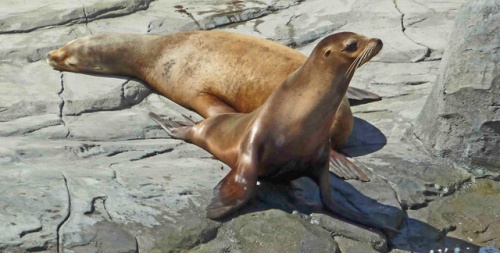
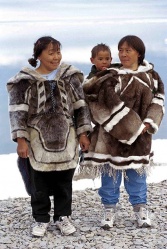
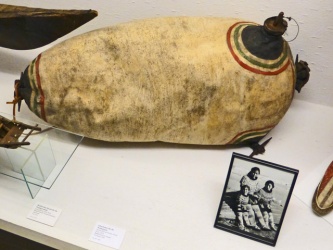
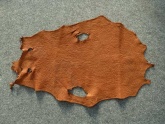
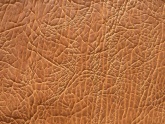
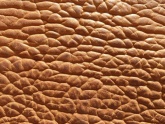
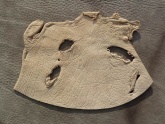
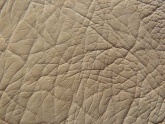
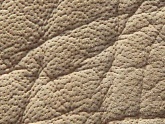
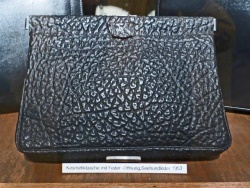
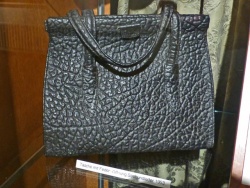
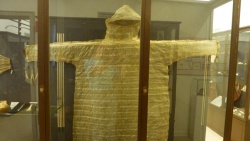
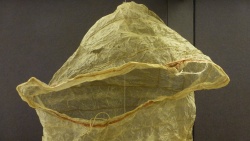
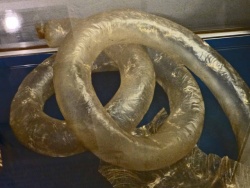
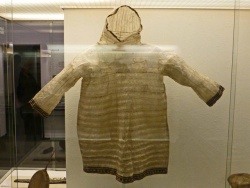
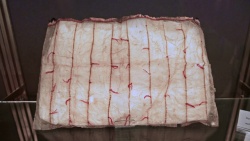
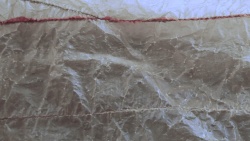
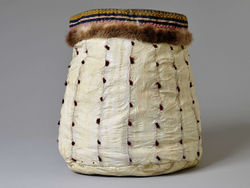
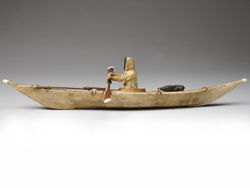
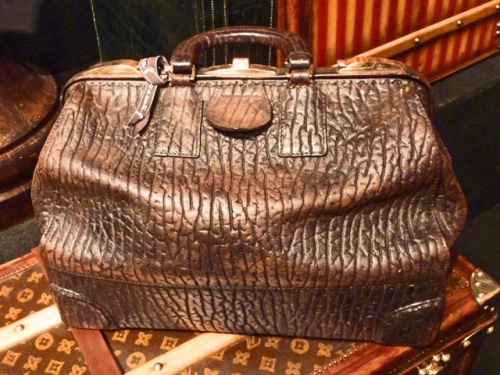

 a kotori web solution
a kotori web solution